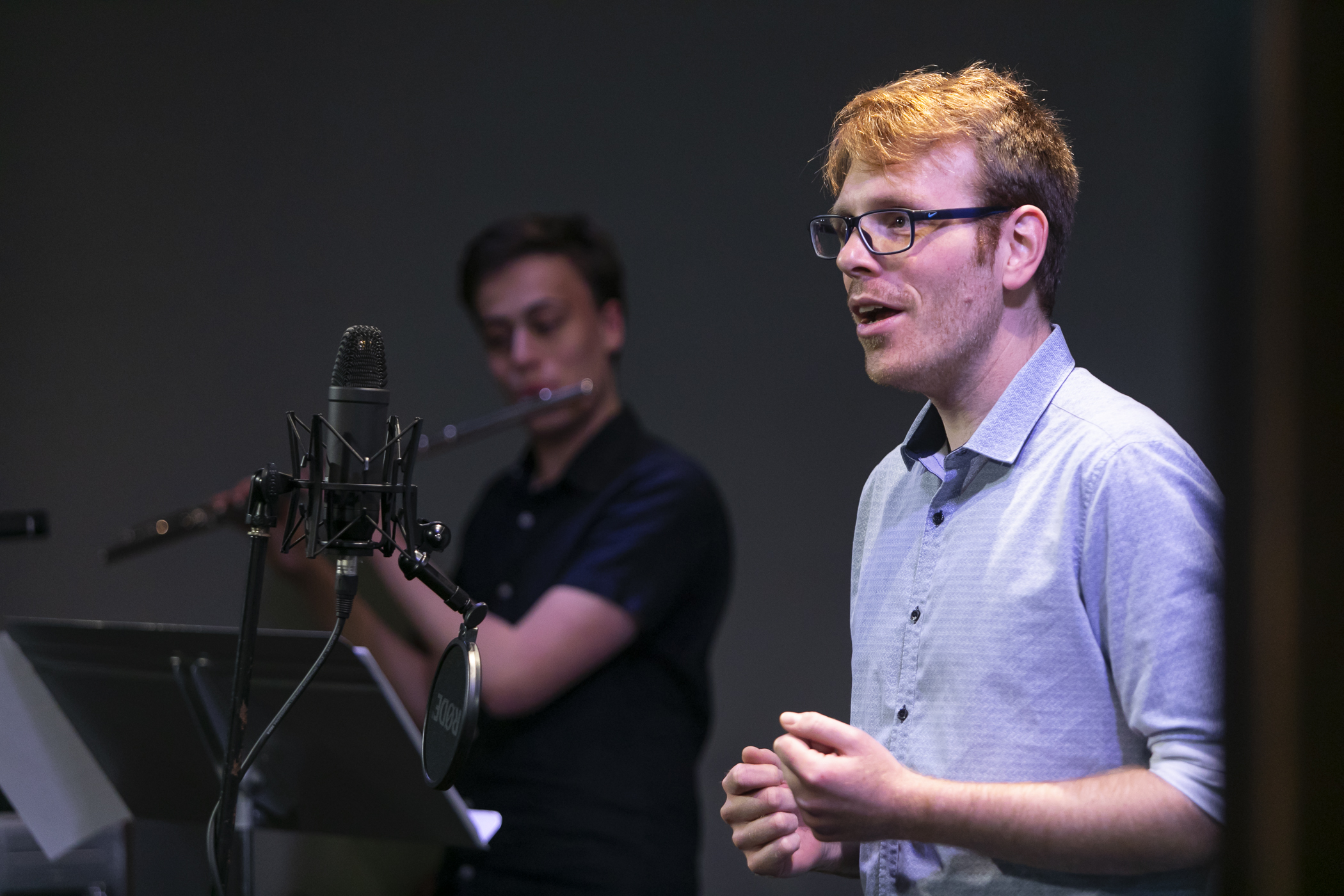Fast-track better breathing for singing with these Accent Method exercises
In last month’s article, I introduced Accent Method Breathing (AMB), an efficient way to quickly take in breath to support singing and increase your versatility as a singer. The article included a few beginner AMB exercises, which you can try here. This month, I introduce some advanced breathing exercises for better singing.
Fundamental to AMB is the concept of SPLAT (Singers Please Loosen Abdominal Tension), which reminds a singer to take a quick, low in-breath between phrases to set up for the next. On inhalation, your diaphragm quickly descends, then you engage your abdominal muscles to exhale, with your rib muscles (intercostals) helping fine tune the pressure and flow of air.
Learning AMB, our studio singers have already increased their strength, flexibility and awareness of using their abdominals to release for the in-breath, and to consistently, consciously engage them to control the inward movement, to keep air pressure flowing for singing.

Photo by Max Van Den Oetelaar on Unsplash
Advanced Accent Method Breathing exercises
Most of these exercises can be done anywhere, and don’t need dedicated practice time. Little and often brings great results.
- In our last article, I mentioned that AMB exercises can be done while rocking back and forth on the feet. This swaying motion helps you cue the release of your belly wall breathing in, and control its retraction on exhale. With one foot in front of the other, rock forward, placing your weight on the front foot as you take a SPLAT in-breath. Next, shift your weight to the back foot and draw in your belly wall as you make a sound. Place two fingers on your belly wall, just below your navel, to feel the inward movement. Aim for an intentional action of your abdominal wall and breath flow.
- Now you’ve got the momentum of rocking back and forth, you can build on the fricative consonant sounds from our last article (Zoo, Zee, or Vah, and words such as Zoo, Shoe, or Voice or Thin). Try adding a voiced Wu or Wao
- In the studio, we work together for this next exercise, with the singer’s permission. Standing side by side as a pair of skaters might, the singer places the back of their hand on my belly wall and I hold that gently in place. The singer places the back of my hand on their belly and holds it in place. Together, we slowly begin that rocking movement as we breathe in on the forward motion, then make sounds on the backward motion. Working together brings the singer kinesthetic awareness of the use of their abdominals. By feeling the teacher’s abdominal movement, they can use this as a template for their exercise, as they learn to support their breath flow, for steady sound. Support does not mean tension, but a flexible movement of the abdominals.
- For this one, I have adapted AMB teacher, Prof Janice Chapman’s ‘Hey Ha’ exercise. On a downward scale of 5 notes (major keys work), sing Hey… Ha… Hey… Ha… Hey. Place a hand on the muscle between your ribs and pelvis (each side) and as you sing Hey Ha with vigour, you will feel a bulking out at this waistband junction. Remember to keep the inward abdominal movement subtle and controlled, not sudden or forced. The SPLAT in between each Hey or Ha is important because it creates muscle memory. When performing, singers want their breath process to work without thinking. This only comes from repeated and insistent practice.
- Try adding a tongue trill on a rolled RRR Either as a separate exercise ascending and descending on 5 notes, or adding an upward scale after the Hey Ha exercise. The tongue trill, together with AMB, ensures a conscious, insistent air flow at a pressure that keeps the sound constant and balanced. If a lip buzz is easier for you, use that. It may take a while to get a consistent sound flow and breath flow, but remember: practise a little and often.
Accent Method Breathing gives a singer voluntary control and prevents over-breathing. Your brain initiates and controls the use of your abdominals, so you can increase or decrease air flow as needed. It requires and encourages good postural alignment, freeing the upper body of tension, and training the muscles to strengthen, coordinate and be ready for the endurance that singing demands.
For studio singers, they’re achieving clear, resonant sounds because their vocal fold closure is improved by good breath onset. Using AMB builds their confidence to sing long, upward, and extended phrases with an open throat and vocal tract
Kathleen Connell makes learning Accent Method Breathing easy, so singers can achieve better breath support faster. Browse our in-person or online training options, or call 0402 409 106.




